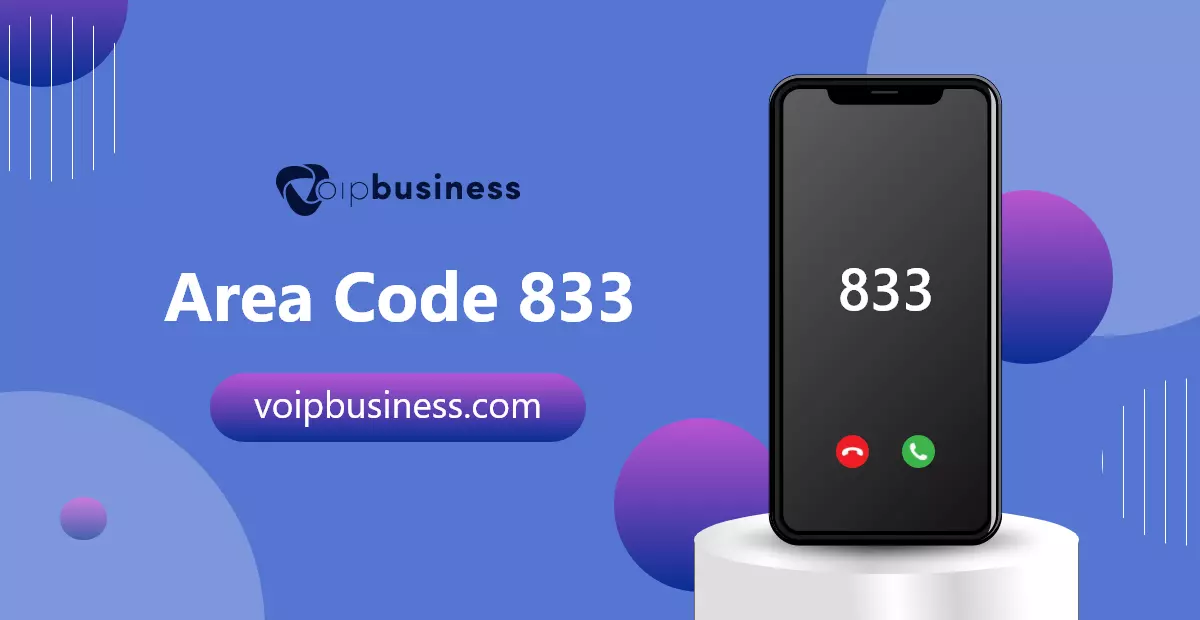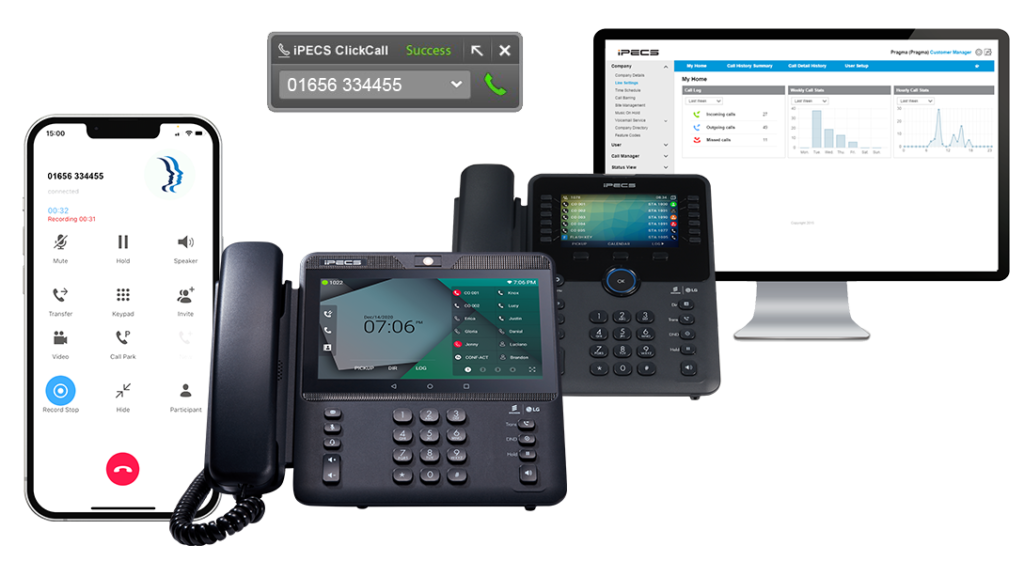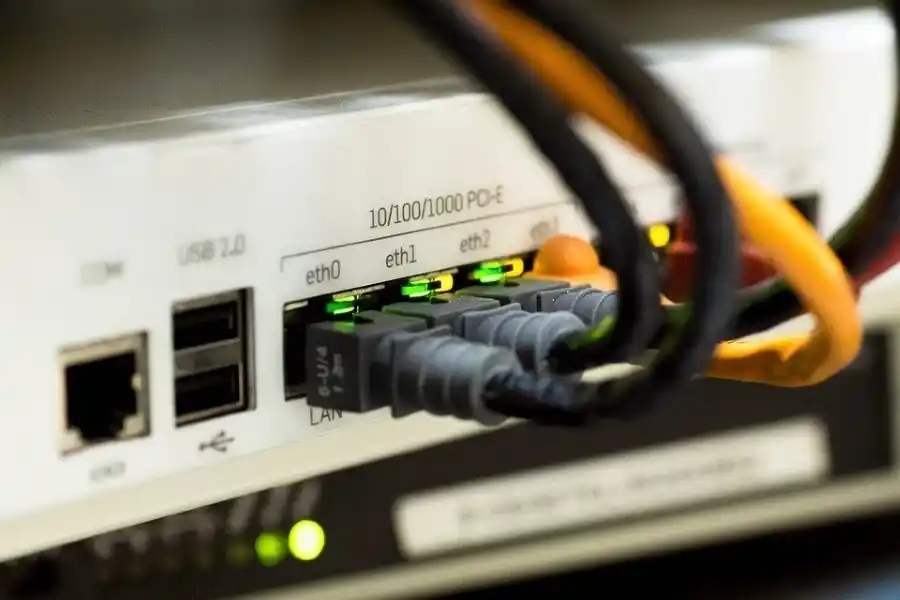Small and medium-sized companies are benefiting from expense savings that Voice over IP (VoIP) is providing by using VoIP Performance Management. With video conferencing, cloud programs, mobile phone apps, and voice data all passing through the same network connection, there should be a focus on the quality of service for the company. Voice over Internet Protocol (VoIP) system is known as one of the most highly maintainable platforms in networking. VoIP telephone systems have the least amount of tolerance for below-average performance because a bit of drop in signal and packet data can greatly affect the audio quality of the call. You can only make sure that the network can support VoIP systems by utilising VoIP monitoring tools. These tools are effective in finding out about the connection quality within the network. That makes sure the phone calls you are making are not of low quality. Critically, a VoIP monitoring program will facilitate you in finding the amount of latency and the packet data loss on the network. What must be included in an effective VoIP Performance Management tool? We studied the market for VoIP monitoring programs and examined what is available to use according to these guidelines: Monitoring connection steadiness with live visual response in the system console. Mechanisms to represent the quality of service issues, like poor signals and packet data loss. Capacity and performance indicators that deliver alerts. An examination function to find out past performance details. Help in applying traffic directing technologies to enhance VoIP performance. A free trial for VoIP performance management and monitoring or a free utility. A detailed paid system that provides value according to its price or a free tool that is valuable for utilisation. In this post, we will discuss the best software for VoIP performance management and optimisation. It includes: Solarwinds VoIP Paessler PRTG Network Monitor Site 24×7 VoIP Monitoring Thousand Eyes ExtraHop 1. SolarWinds VoIP Performance Management & Network Quality Manager The number one VoIP performance management software in our list is SolarWinds VoIP and Network Quality Manager. SolarWinds VoIP and Network Quality Manager facilitate the end-users in analysing VoIP call quality and WAN’s effectiveness in providing the infrastructure for making VoIP calls. The program monitors VoIP setbacks like jitter and latency. It also measures aspects like Mean Opinion Score (MOS) and packet data loss. In addition, this software provides a report if the VoIP calls are being conducted with low-quality voice and phone signals. If you want to carry out broader troubleshooting, you can view all your call records to discover data that can show you what is the root cause. For example, you can look for calls by call origination, call manager and call status. You can also view calls according to call time and call quality. This assists in proceeding with the troubleshooting process rapidly. SolarWinds VoIP and Network Quality Manager are reachable by companies because they provide a user-friendly interface and implement it in one hour. After which, it can start giving output for any VoIP performance management and optimisation. The deployment is optimised because the system automatically finds Cisco IP SLA-empowered devices. Also, autodiscovery implies that the client doesn’t need to set up anything manually. Pros: Enterprise oriented approach for VoIP supervising, useful for perfect analysis. Can easily handle plenty of websites with key quality metrics from one configurable console. Provides a network map that assists groups by envisioning VoIP issues, extraordinary for investigating complex implementations. Can automatically find VoIP devices, making onboarding an easy task. Provides SLA supervising to estimate packet data loss, latency and MOS. It can also find out jitter and idleness. Cons: VoIP performance management software is intended for big sized business utilisation; completely investigating all components and choices will require time. OUR OPINION In general, SolarWinds VoIP and Network Quality Manager is a product that is appropriate for companies of all sizes searching for VoIP analysis software. That is why it is on the first number on this rundown. Operating system: Windows Server; on-location server or cloud arrangement. It requires Cisco IP SLA connectable routers or switches. 2. SolarWinds Call Detail Record Tracker (FREE UTILITY) Call Detail Record Tracker is a free VoIP analyser accessible from SolarWinds. That is a decent choice assuming you need the ability and quality of the SolarWinds program. Yet, you don’t prefer to pay for utilising the VoIP performance management software service provider’s best in VoIP Network and Quality Management. The Call Detail Record Tracker satisfies the capacities described in its name. It empowers you to look through VoIP-related status records that have been accumulated on the local or wide area network. The Cisco CallManager framework should provide those records. CallManager’s other name is Cisco Unified Communications Manager. The data searcher can save and combine total call detail records (CDRs) for as long as 48 hours so that you can carry out some investigation tasks provided with the VoIP performance management software or transmit data to some other network examination utility. This software can find out measurements for jitter, packet data loss, latency, and MOS (mean opinion score). The beneficial aspect of the Call Detail Record Tracker is that it is freeware. But, its usefulness isn’t by any standards close to that of the SolarWinds Network and Quality Manager. Pros: It is an entirely free program, beneficial for utilisation by nonprofit companies and smaller firms. Tracks attribute like jitter and latency. It also measures details like MOS for every call. It provides facilities like basic to moderate interface. Cons: Not intended for big business use, bigger organisations should utilise trial SolarWinds VoIP and Network Quality Manager. This product would function perfectly as a data-driven software for more extensive network performance supervision. Those scenarios can assist a network supervisor to focus on VoIP traffic if a few issues show up with components of your organisation network. The SolarWinds Call Detail Record Tracker operates on Windows Server and is accessible for download as free VoIP performance management software. 3. Paessler PRTG Network Monitor (FREE TRIAL) PRTG Network Monitor is a network management product that offers a VoIP inspection feature with free QoS and IP SLA management. QoS inspection with PRTG Network Monitor occurs with the PRTG Round Trip Sensor, which estimates latency, packet data loss and jitter. It also finds duplicate IP packets and Mean Opinion Score. Moreover, there is a Cisco IP SLA Sensor for examining Cisco device information. The more extensive inspection experience is personalisable as per your needs. You can customise the console to incorporate gadgets for making measurements fitting your personal preference. You have total control over the information that you view on the console. For VoIP inspection, we advise that you utilise the PRTG Round Trip Sensor to provide you with a picture of your VoIP call performance when you sign in. You should not constantly assess the quality of your VoIP calls manually. So, you can utilise the notifications framework to update you when VoIP calls have a low voice standard. PRTG Network Monitor provides warnings by email, SMS, and pop-up messages. These are beneficial because you have relevant information the instant VoIP calls’ quality reduces. Paessler PRTG is an information-delivering framework that facilitates experts in tackling VoIP execution exploits. In addition, PRTG covers the whole collection of facilities that leads to effective VoIP performance, so there will be no ignored feature when tweaking infrastructure for fruitful results. ”It provides a free edition for up to 100 sensors, making it a decent option for little and big companies. Cost is according to the sensor utilisation, making this an adaptable and expandable solution for more extensive networks. Also, experts advise it to those who are low on budget.” Installation and Configuration: The setup of the VoIP performance management software takes little time because PRTG requires a powerful system to install. Unlike the majority of its competitors, there is no cloud based installation model of PRTG. To run this inspection software, you will be required to work with a Microsoft Windows Server machine with no less than 2 CPU cores and 3 gigabytes (GB) of RAM. You’ll likewise require something like 250 GB of available disk space. You can also carry out its setup on a virtual machine, but that will not allow the VoIP performance management software to work from the cloud because Paessler suggests the product be installed on an actual hard disk operating inside the production environment being inspected for measuring the performance. For those hoping to oversee big company networks at various locations, it can become somewhat more complex. For these situations, the developer suggests installing actual PRTG Remote Probes that are also servers. They require no less than one dual core CPU and at least 2GB of RAM to operate. Managing Devices: Besides the local setup, PRTG utilises a high-tech browser-based interface. It is better than the basic product in the market. With that in mind, the VoIP performance management software is quality-focused. It also makes it simple to determine what type of monitoring you want to carry out. The one drawback of having a graphically simple interface is compensated by developing well-detailed network maps. In simple words, these are great features for any program that is made for VoIP Performance Management. Of course, you need to do some hard learning to work with the Paessler PRTG Network Monitor. In any case, if you put in your time and effort to do a little practice, you will be able to assemble a perfect and very detailed network map that you can project on an extra-large television in your NOC (Networks Operation Centre). So everybody has an effective idea of how your company’s network is getting along at some random time. Pricing: PRTG Network Monitor is available as free and purchasable VoIP performance management software. You can utilise the PRTG Round Trip Sensor and the Cisco IP SLA Sensor totally for free. But, assuming you need to supervise a network with more sensors, then you can buy somewhere in the range of 500 sensors for £1,057 and £10,104 for limitless sensors. You can download the thirty-day free trial. 4. Site24x7 VoIP Monitoring Site24x7 VoIP Monitoring is an essential component of the APM module of the cloud-based framework’s monitoring service. Site24x7 APM can gauge the movement of VoIP traffic, recording a list of necessary traffic delivery indicators. Among the characteristics of VoIP traffic that Site24x7 APM gauges are: jitter (positive and negative), packet data loss. It also measures roundtrip time (Ping), Mean Opinion Score, and packet sequence errors. Measurement of these variables assists in a Quality of Service (QoS) status check. This VoIP performance management software inspects the consistency and delivery times of both incoming and outgoing VoIP traffic at an endpoint information collection node. The live monitoring console has tabs with every tab showing a different gadget enabled for traffic inspection. That implies that the network manager can switch between devices to learn about the full report on present VoIP performance. That allows for better monitoring than a single viewpoint since it empowers system administrators to recognise the specific area of traffic issues. Pros: Can work for both big and small companies for VoIP performance management. The platform enables network managers to monitor different areas like network, application, and real user monitoring. Simple to modify dashboard and monitoring interface. Can inspect all key VoIP metrics, including custom QoS gauging metrics. Cons: Site24x7 provides a well-detailed interface, and it may require effort to completely find out about all choices and provisions. Site24x7 also provides these features. Program Performance Management Error reporting tools Full Transaction error reporting Resource handling Root-cause error inspection Server performance measurement Individual Transactions Inspection Artificial Intelligence Chatbot Machine Learning Several-Languages Natural Language Inference Predictive Study Activity/Workflow Automation Policies-Based Automation Billing & Provisioning Price Management Multi-Cloud Supervising Performance Examination SLA Supervising 5. ThousandEyes ThousandEyes is a network monitoring platform that works as one of the superb VoIP analysis and VoIP performance management software available in the market. ThousandEyes measures VoIP performance with the primary performance metrics like latency, packet data loss, and jitter. These are the necessary indicators for finding out how well VoIP services are performing. Something that makes ThousandEyes great is that you can reproduce VoIP calls for specialists at workplaces. That permits you to scrutinise your VoIP service provider. A voice test facility also allows you to test for SIP availability before you start a TRP call. The ThousandEyes platform has been created with troubleshooting features in mind. For example, you can follow framework errors down to connection and interface with SIP and RTP network paths. Pros: Perfect and simple to use interface, utilises graphics. It offers artificial VoIP traffic recreation, superb for duplicating issues and resource planning. In addition, it is intended to smooth out the troubleshooting process. Cons: It doesn’t integrate well with other famous platforms. Plenty of customisation choices in the console and reporting segment will be a beneficial change. ThousandEyes works as a costing model relying on yearly membership. Costing structure is adaptable and reliable because of various variables like test units, endpoints, and gadgets. You need to reach out to the sales group to get an accurate quote. If you’d prefer to contact the ThousandEyes sales group, you can do that to get further guidance. ThousandEyes VoIP Performance Assessment Solution: ThousandEyes VoIP performance management software facilitates you in making three kinds of tests: SIP Server Carries out a VoIP call session startup with the selected server utilising Session Initiation Protocol (SIP) over TCP or UDP. RTP Stream Makes an artificially recreated voice data stream between two ThousandEyes Agents working as the VoIP endpoints. Voice Call Simulates an entire VoIP call, including the meeting session startup utilising the Session Initiation Protocol (SIP) and then voice data transmission using the Real-time Transport Protocol (RTP) between call endpoints. ThousandEyes has a layered methodology for gathering information. So, we consider this approach incredibly convenient when troubleshooting. When an issue occurs, ThousandEyes gives an elevated perspective of the issue from the upper layers, permitting to analyse further aspects according to the situation. The new VoIP features in this VoIP Performance Management software are unique. We tried the software for inspecting SIP Servers and RTP streams by using a simple-to-use interface to gather informative and accurate information when required. What we truly preferred was the option to divide SIP Server and RTP Stream in plenty of tests. Just like DNS name resolution, it’s great to see the path taken by SIP and RTP streams to streamline them for quality performance. Establishing the full voice call can be difficult now because it needs to have running SIP Servers for all agents, including explicit details for authentication. One of the drawbacks of ThousandEyes is that it doesn’t offer an already deployed SIP server. That can be a feature that can assist companies while testing their infrastructure without making arrangements for their SIP servers. Ideally, something that ThousandEyes can remember to add to their package in the coming time. ThousandEyes can be utilised for tactical choices. For example, suppose a company is thinking about running Office365 on a cloud. Before marking a costly buying contract, a smart IT supervisor will carry out some in-house testing to guarantee that the application performs well when utilised in his workplace. You can come across a similar situation while deploying VoIP performance management software like ThousandEyes. Again, before purchasing, you can carry out some genuine testing to check the quality and execution of the voice services. The ThousandEyes software is perfect for VoIP performance management. Gradually, the developers of this program are trying to make it better so that present-day organisations can benefit from it by monitoring every part of their VoIP network. ThousandEyes VoIP Monitoring can operate free of charge if you make a trial account. That will give you permissions to the entire features for fourteen days. We have provided you with a complete overview of this software; now, it’s an ideal opportunity for you to give it a try. 6. ExtraHop If you are searching for VoIP performance management software intended for troubleshooting, ExtraHop reserves the top place in the industry. With ExtraHop, you can inspect the performance of VoIP calls in your whole organisation from the ExtraHop VoIP-SIP calls dashboard. Through the dashboard, you can determine the number of calls that are successful or unsuccessful. There is a scope of variables that you can inspect with ExtraHop. By introducing the SIP VoIP Call Dashboard, you can inspect call session status and call volume. You can also monitor load balancing, routing call quality, and Non-VoIP protocols. The metrics you can inspect consist of active calls, short calls, and call failures. You can also monitor the metrics like 5xx mistake codes, call attempts, and call length. ExtraHop is also one of the most easy-to-use VoIP performance management software because it permits the client to find gadgets inside the network. The upside is that you can avoid the difficult task of calibrating your whole network from the basic level. ExtraHop VoIP performance monitoring software is utilised to inspect the inside network across a few corporate areas. You can use it to examine and interpret the traffic to decide whether any interference occurs. What’s more, you can utilise it to address different program and programming issues like SQL queries and how they run on the network. A new and precious feature of ExtraHop is the single program for cloud investigation. Cloud activity can easily be identified with the facility to deploy responses alongside evaluations to reduce the difficult task of making reports. In contrast with Netscout, ExtraHop’s UI is more familiar and simpler to use. Pros: Perfect use of graphics for monitoring VoIP metrics. Basic interface – utilises shading highlights well. Monitors inside details like dynamic calls and 5XX errors and call length. SQL query inspection. Packet inspection. Searches for suspicious network activity. ExtraHop VoIP management software provides great value for the price. The ExtraHop VoIP performance monitoring software features are perfect. It is as per the sales and marketing expectations of clients. The deployment of the extra hop is as per the expectations of clients. The majority of people would like to repurchase Extrahop VoIP performance management software. Packet data inspection Network detection Network response Profitable SQL Inspection/poor querying analysis Troubleshoots Network Routing Issues Providing Network Response and Alerting Cons: Could utilise more extensive documentation. There should be the addition of integration services into traffic investigation instruments like Wireshark. Disengaged gadgets appear in the dashboard. That is because they are being taken out. To benefit from VoIP inspection on ExtraHop, you’ll have to download the SIP VoIP Call dashboard. You can also evaluate the free trial of ExtraHop. Conclusion Undoubtedly, VoIP performance management software is a necessary asset for any organisation that relies on VoIP services. From the above post, you can conveniently select the appropriate VoIP monitoring program for your organisation so you can analyse the primary VoIP network variable like jitters and packet data loss. In addition, you can also monitor roundtrip time (Ping), Mean Opinion Score, and packet sequence errors. Inspections of these variables help in a Quality of Service (QoS) status check. With our overview of the above software, you can be on your way to receiving the best VoIP service in your company.










